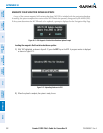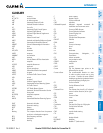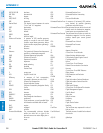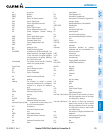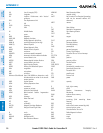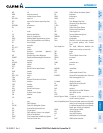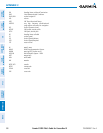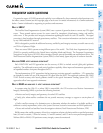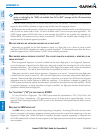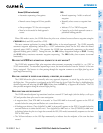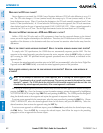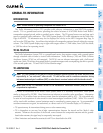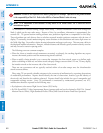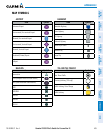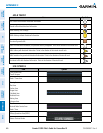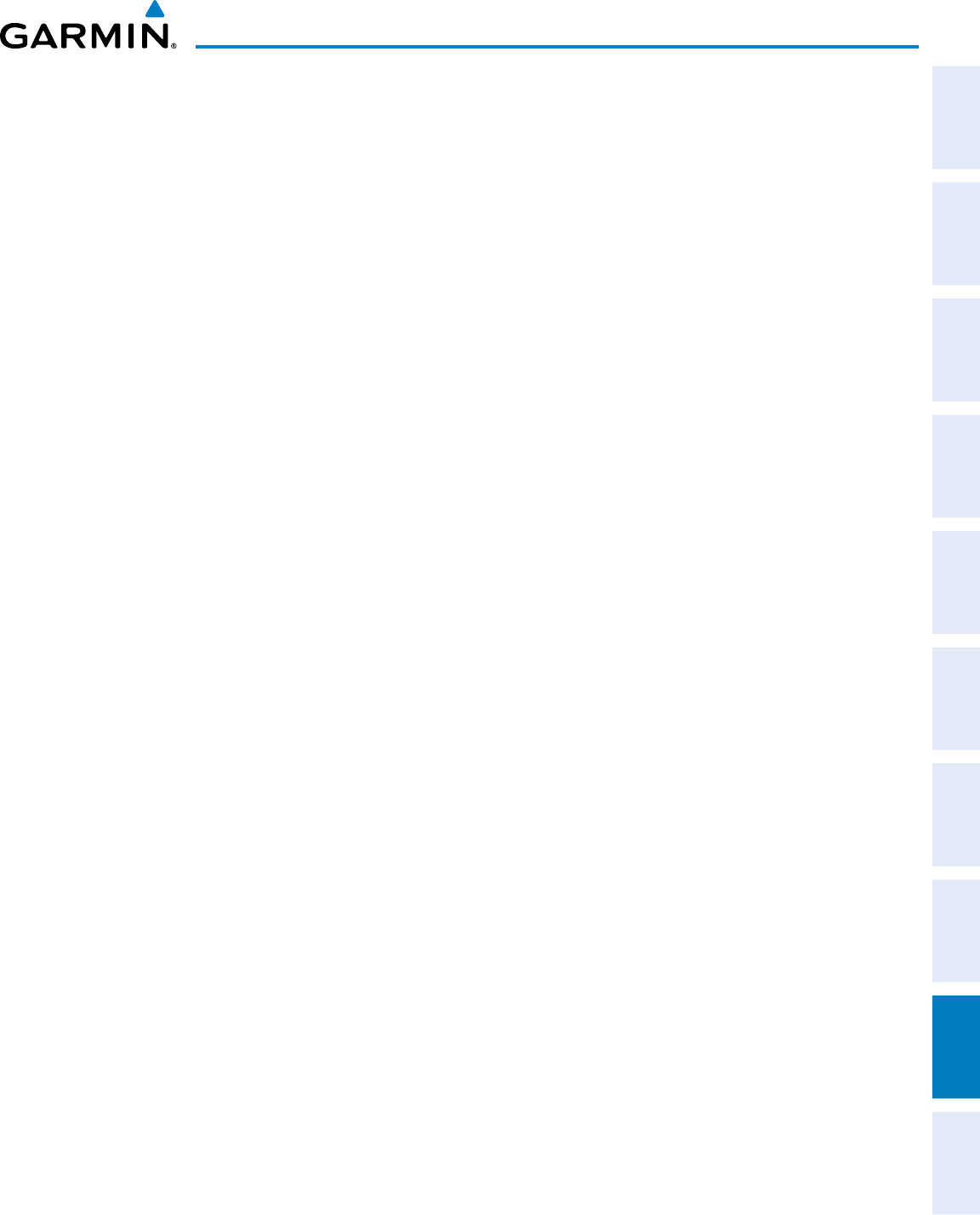
190-00498-07 Rev. A
Garmin G1000 Pilot’s Guide for Cessna Nav III
SYSTEM
OVERVIEW
FLIGHT
INSTRUMENTS
EIS
AUDIO PANEL
& CNS
FLIGHT
MANAGEMENT
HAZARD
AVOIDANCE
AFCS
ADDITIONAL
FEATURES
APPENDICES INDEX
599
APPENDIX D
FREQUENTLY ASKED QUESTIONS
If a particular aspect of G1000 operational capability is not addressed by these commonly asked questions or in
the index, contact Garmin (see the copyright page or back cover for contact information) or a Garmin-authorized
dealer. Garmin is dedicated to supporting its products and customers.
What is sBas?
The Satellite Based Augmentation System (SBAS) uses a system of ground stations to correct any GPS signal
errors. These ground stations correct for errors caused by ionospheric disturbances, timing, and satellite
orbit errors. It also provides vital integrity information regarding the health of each GPS satellite. The signal
correction is then broadcast through geostationary satellites. This correction information can then be received
by any SBAS-enabled GPS receiver.
SBAS is designed to provide the additional accuracy, availability, and integrity necessary to enable users to rely
on GPS for all phases of flight.
There are several SBAS systems serving different parts of the world. The Wide Area Augmentation System
(WAAS) is currently available in the United States, including Alaska and Hawaii. The European Geostationary
Navigation Overlay Service (EGNOS) offers coverage of Europe, parts of the middle east and northern Africa. The
Multi-functional Satellite Augmentation System (MSAS) covers mainly Japan and parts of northern Australia.
hOW DOes sBas aFFect aPPROach OPeRatiOns?
Both LNAV/VNAV and LPV approaches use the accuracy of SBAS to include vertical (glide path) guidance
capability. The additional accuracy and vertical guidance capability allows improved instrument approaches to
an expanded number of airports throughout the U.S.
The implementation of LPV approaches further improves precision approach capabilities. LPV approaches
are designed to make full use of the improved GPS signal from the SBAS. This approach combines the LNAV/
VNAV vertical accuracy with lateral guidance similar to the typical Instrument Landing System (ILS). LPV
approaches allow lower approach minimums.
What is Raim anD hOW DOes it aFFect aPPROach OPeRatiOns?
In systems using the GIA 63, or when SBAS is unavailable, the GPS receivers use Receiver Autonomous
Integrity Monitoring (RAIM) to perform the following functions:
•MonitorandverifyintegrityandgeometryoftrackedGPSsatellites
• Notifypilotwhen satellite conditionsdonot provide necessary coveragetosupport a certainphaseof
flight
•Predictsatellitecoverageofadestinationareatodeterminewhetherthenumberofavailablesatellitesis
sufficient to satisfy requirements (refer to the System Overview Section for instructions on RAIM prediction)
•Detectandexcludebadsatellitesfromthenavigationsolution(FaultDetectionandExclusion,FDE)
RAIM ensures that satellite geometry allows for a navigation solution calculation within a specified protection
limit (4.0 nm for oceanic, 2.0 nm for enroute, 1.0 nm for terminal, and 0.3 nm for non-precision approaches).
Without SBAS or RAIM, GPS position accuracy integrity cannot be monitored.




